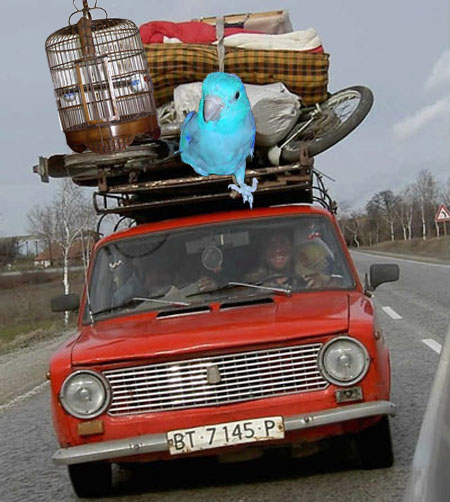PROPOSED PORT EXPANSION TO ACCELERATE TRADE IN WEST ASIA
Photo Source: Panoramio – hireg
Dubai in the United Arab Emirates has traditionally distinguished itself as a vital trade center in the Arabian Gulf region. Dubai’s distinct location in the south – western part of the Arabian Gulf has enabled it to play an active trading role in linking the maritime lines on one hand while facilitating transportation of goods between the East and the West on the other hand.
In general, the economies of the UAE are based on two main activities, which are non-oil trade and oil producing, and exporting. Jebel Ali port has witnessed, during the last three decades, rapid growth of its trade and industrial activities. The port has taken advantage of several of its core-competencies, including its strategic location over-looking the Arabian Gulf, the completion of its past infrastructural projects and the running of these facilities according to the latest standards.
Growing from Strength to Strength
The United Arab Emirates has witnessed remarkable growth in tonnage in all of its ports this year and the terminal is currently operating at very high levels of utilization reflecting its strong position as a hub for the fast growing regions of the Middle East, Indian subcontinent and Africa. To overcome port congestions, UAE is upgrading the Jebel Ali port by creating an additional 4 million TEU (inexact unit of cargo capacity) capacity, which will result in total volume at this port alone reaching 19 million TEU by 2014[1].
Currently, the Jebel Ali port takes the lead among the other Emirates in the volume of exports. For instance, Dubai’s exports constitute around 82.2% of the country’s total exports and Jebel Ali port handles the entire export cargo.
Even after the global financial crisis of 2008, foreign trade in UAE has still been very active and has recorded a considerable rise in the rates of trade exchange growth locally, regionally and internationally. This active movement was a reflection of the requirements of markets covered by trading channels, which are the free import of most consumable, intermediate, and capital goods.
‘Ample Demand’
Thus, the UAE government, expecting a strong trade rebound, has awarded DP World, a company that operates more than 60 terminals across six continents the contract to expand the port. According to reports DP World will be investing around $850 million over next three years to construct a new 1,860 meters of quayside and 70 hectares of yard from the existing general cargo berth, basically increasing tonnage[2].
DP World’s investment in a new container terminal at Jebel Ali will certainly support the continued growth of Dubai and the UAE and enhance the country’s status as the trade center of the Middle East. Most industrialists familiar with commerce in the Gulf Region would consensually agree that over the past 40 years, Jebel Ali’s port facilities have contributed significantly to the development of Dubai, the UAE and the wider region through the provision of efficient supply chain services.
The proposed new terminal, which is expected to operate with the largest, most efficient quay cranes and is forecasted to have a draft of 17 meters, would enable them to handle the world’s largest container vessels planned for the future. The company has furthered their intention to leverage on Jebel Ali Port.
Changes in International Trade
The economic reason for DP World is simple. There has been a record in container volumes in the UAE region for 2011, with growth of 11% so far this year and over a million TEU per month being handled in the Jebel Ali port alone[3]. Hence, the development of this new capacity at Jebel Ali will ensure that UAE continue to meet the growth in demand from customers who look to Jebel Ali to provide a first class service right across the portfolio.
Organizations such as the IMF and The World Bank have both projected GDP forecasts to reflect a continuation of growth across the region and container shipping lines ordering larger vessels. The expansion of Jebel Ali Port will ensure additional shipping containers required and a continuation of the high levels of efficiency.
As Jebel Ali gets a “facelift”, the port is expected to continue to be both a gateway for cargo and a vital hub for facilitating trade growth throughout the region, and needs to be able to handle the new generation of mega vessels. In response, we are creating new container handling capacity to meet those needs, offering the efficient and cost effective services other customers have come to rely on.
Looking Forward
One thing is of certain is that Jebel Ali Port has strengthened its distinguished strategic location by leveraging on the free and balanced economic policy that has given it a good reputation in the international, commercial and economic communities. This has further encouraged national and foreign capitals to enter into successful investment ventures in different commercial, industrial and service fields throughout the Middle-East region.
Jebel Ali Port has further boosted the importance of its strategic location by emphasizing the UAE’s free economic policy. Setting up complete infrastructural projects by DP World will put in place facilities required to achieve port efficiency. This in turn will have an immediate spill-over and positive impact on growth rates in various economic sectors, social development and improved living standards of the individuals in West Asia.
All this and more, has enabled Jebel Ali Port to become one of the most important centers for imports, exports, and re-exports in the region. During the last two decades the port operators have worked to strengthen its industrial base with the aim of diversifying the sources of income.
[1] Bloomberg
[2] World Maritime News
[3] World Cargo News









